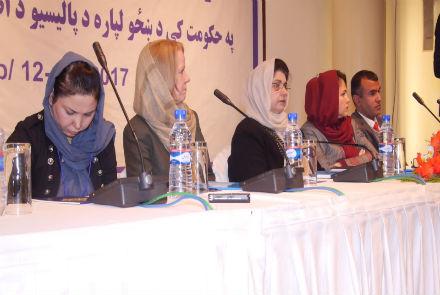The Ministry of Women’s Affairs (MoWA) said on Sunday that the number of women in government institutions has declined despite the Afghan political leadership having pledged to increase their numbers from 20 percent to 30 percent.
Harassment, nepotism in appointments and gender discrimination are apparently key reasons behind the shortage of women in government institutions, the MoWA stated.
“Unfortunately the index, which we had set as a target to increase the presence of women to 30 percent, has not been achieved; because of harassment - I fear that the presence of women could drop from 22 percent to 21 or 20 percent,” said deputy minister of women’s affairs Spozhmai Wardak.
On Sunday a workshop was held in Kabul to promote the Afghan Women’s Empowerment Program (AWEP) where participants exchanged views on a wide range of issues relating to Afghan women, including the recruitment of women in government institutions.
“This is the beginning of the discussion,” said Diana Bowen, director of the AWEP project.
NUG leaders had pledged to increase the presence of women from 20 percent to 30 percent.
“Making policies and strategies are preliminary steps, we need commitment from those at a leadership level in government institutions, we cannot rely only on drafting of laws,” said MP Fawzia Kofi.
Funded by the United States Agency for International Development (USAID), the five-year project to promote women was initially launched in 2015 and is dedicated to empowering Afghan women and expand their presence in government institutions.
Latest news

